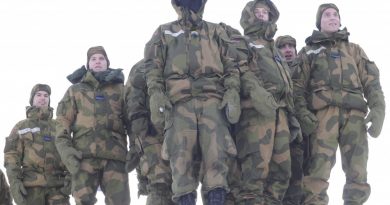Jaeger battalion GSV gets weapons to destroy low-flying aircraft and drones

Specialized invasion defense soldiers on the border with Russia’s heavily militarised Kola Peninsula are the first in Norway to be armed with the Piorun man-portable air defense system.
The first weapons were delivered to Norway in 2023 and training with live shootings is soon to start. It was after Russia’s massive attack on Ukraine in 2022 that the Norwegian Armed Forces signed a 350 million NOK (€30,5 million) contract with Polish defense technology company Mesko to buy the Piorun Portable Anti-Aircraft Missile System.
“We are already soon in the process of developing and testing operation concepts,” writes troop commander for portable air defense with the Jaeger Battalion GSV, Brede Brandskognes, in a post at Stratagem, a blog site for defense- and security debate.
Brandskognes adds that the first live shooting will be later this year.
The Jaeger Battalion GSV, formerly known as the Garrison of Sør-Varanger, is tasked to protect Norway’s sovereignty and guard Schengen’s border with Russia on behalf of the police.
That mission has become way more serious over the last two years. Norway’s 198-kilometer border to the Kola Peninsula is also NATO’s northernmost direct land border with Russia.
Although thousands of soldiers from the 200th Separate Motor Rifle Brigade and the 61st Separate Guards Red Banner Kirkenes Naval Infantry Brigade in Pechenga are killed or severely injured on the battlefields in Ukraine, the land forces close to Norway and Finland in the north represent a massive force.
The Jaeger Battalion GSV has about 900 soldiers.
New anti-aircraft weapons will enable the Norwegian soldiers to hunt down drones, low-flying fighter jets and helicopters attempting to cross the Pasvik river or other places along the land border that stretches all north to the coast of the Barents Sea.
With a weight of about 20 kg, the system can be deployed by a few soldiers moving fast around in the terrain in the border area and east Finnmark region. Skiing or snowmobile in the winter and on foot or ATVs in summer.
The heat-seeking missile itself is 10 kg, has a range of 6,5 km, and has allegedly been used by Ukrainian forces to shoot down both Russian fighter jets and helicopters. Poland delivered an unknown number of Piorun to Ukraine shortly after Moscow ordered its troops to invade in February 2022.
Related stories from around the North:
Finland: “Nothing taboo” in upcoming talks with Russia’s Putin, Finnish President Niinistö says, Yle News
Norway: Was a nuclear-able Soviet sub near Norway’s coasts during a deadly 1984 fire?, The Independent Barents Observer
Russia: Russian secret sub to be repaired and put back in service, The Independent Barents Observer
Sweden: Sweden wants to rebuild its “total defence” system, Radio Sweden
United States: Between Militarization and Disarmament: Constructing Peace in the Arctic, Blog by Heather Exner-Pirot



